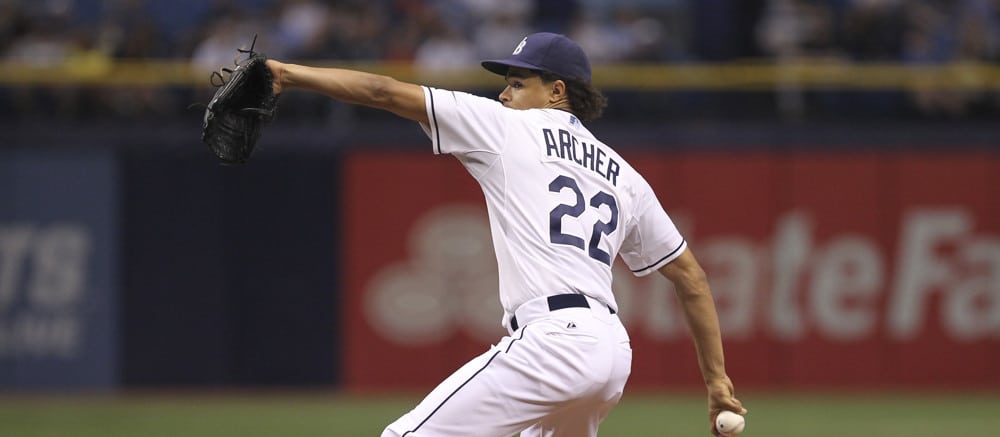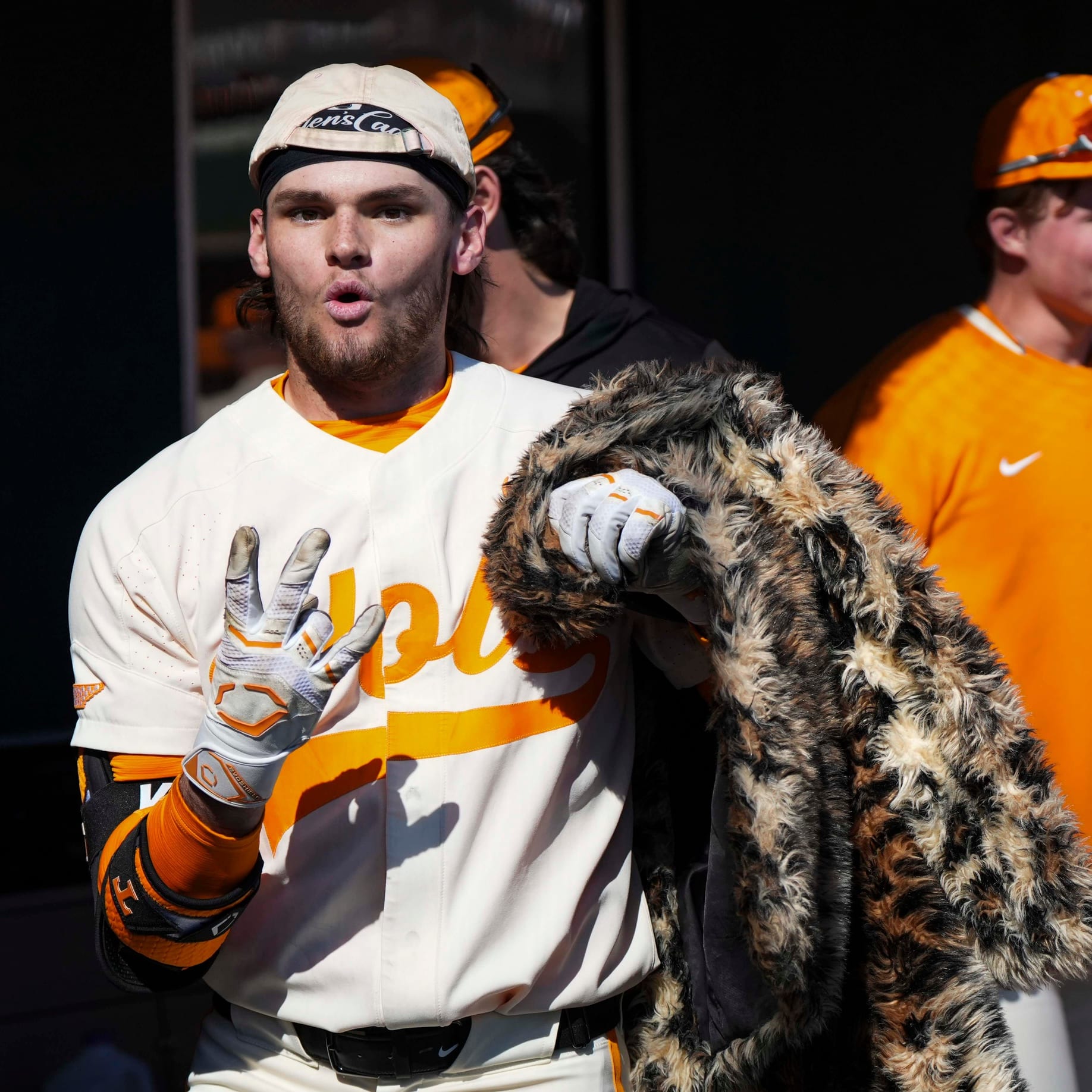This article is part of our Collette Calls series.
I hope everyone had an enjoyable Thanksgiving. Between First Pitch Arizona weekend, a crazy work travel schedule, a last second trip to Philadelphia to watch my UCF Knights stay undefeated and writing player profiles for the RotoWire magazine, this is the first time I've been able to sit down and write since earlier this month. I'm also doing this on Thanksgiving while everyone else is tuned in to see the National Dog Show on NBC. Last year, a greyhound won best in show, and our family is a proud owner of a track-rescued greyhound for the last six years.
The other day, Mike Petriello of MLB.com published an article on 10 pitchers who deserved better results in 2017 based on the pitcher's expected weighted on base average (xwOBA). Readers of this column will recall I took a similar approach to a number of hitters in June. Here are the changes in wOBA for the batters in the article from the time the piece was published until the end of the season:

Cabrera was hurt, but of the healthy players, only Morales failed to improve his offensive production the rest of the season. The lesson learned there is when the expected metrics say the player is going to do better, there is a very good chance there is going to be some improvement moving forward. Joyce and Schwarber were the biggest gainers, but Castellanos and Frazier had significant improvements as well.
What I'd like to do is look a little deeper
I hope everyone had an enjoyable Thanksgiving. Between First Pitch Arizona weekend, a crazy work travel schedule, a last second trip to Philadelphia to watch my UCF Knights stay undefeated and writing player profiles for the RotoWire magazine, this is the first time I've been able to sit down and write since earlier this month. I'm also doing this on Thanksgiving while everyone else is tuned in to see the National Dog Show on NBC. Last year, a greyhound won best in show, and our family is a proud owner of a track-rescued greyhound for the last six years.
The other day, Mike Petriello of MLB.com published an article on 10 pitchers who deserved better results in 2017 based on the pitcher's expected weighted on base average (xwOBA). Readers of this column will recall I took a similar approach to a number of hitters in June. Here are the changes in wOBA for the batters in the article from the time the piece was published until the end of the season:

Cabrera was hurt, but of the healthy players, only Morales failed to improve his offensive production the rest of the season. The lesson learned there is when the expected metrics say the player is going to do better, there is a very good chance there is going to be some improvement moving forward. Joyce and Schwarber were the biggest gainers, but Castellanos and Frazier had significant improvements as well.
What I'd like to do is look a little deeper into a few of the pitchers Petriello pointed out and what led to the pitcher underperforming his quality of contact.
Kenta Maeda
Maeda's 2016 and 2017 base skills were quite similar, yet there was a large difference in his ERA:

The home run rate jumps out as it correlates to the drop in stranding runners on base. Just about everything else was identical to what he had done in 2016. He had that bad four-homer outing in Arizona in April but then kept them mostly in check until the summer time. Maeda allowed 10 homers in his final eight outings in 39.1 innings, which works out to a 2.3 HR/9 rate as one of every five flyballs he allowed left the yard in that time.
Remember the insane heat wave out there last summer? Couple the heat with the juiced balls and you get what Maeda experienced. It is tough to find the consistency Maeda has delivered since coming over to the states. The durability is a problem, but the production is not.
Chris Archer
As Petriello points out, this is the second consecutive season Archer has underperformed his xwOBA. As someone who watches him pitch every outing, there are a few things that stand out with him. For one, he is much better at home than he is on the road. The hitting-friendly environments of the unbalanced schedule do him no favors.
Chris Archer's Home/Road splits:2017 Home: 3.26 ERA/1.13 WHIP2017 Road: 4.97 ERA/1.40 WHIP2016 Home: 2.65 ERA/1.13 WHIP2016 Road: 5.44 ERA/1.36 WHIP
— Rob Silver (@RobSilver) November 24, 2017
Second, Archer is not a very efficient with his pitches and it is no unusual to see him nearly 100 pitches as he begins the 6th inning. In fact, he failed to record 19 outs in 21 of his 34 outings. Managers rarely bring in the "A bullpen" guys in the sixth inning of a game, so Archer's ERA is left at the mercy of a lower-tier reliever, so not only does he lose a potential win, but he could be saddled with an extra run or two.
Lastly, Archer's issue with the Times Through The Order (TTOP) penalty are real. For his entire career the numbers are not terrible, but the TTOP issue is noticeable:

Now, if we drill down to the previous two seasons, it is more noticeable:

Archer could fix his issues by being more pitch efficient, but that is going to come at the cost of strikeouts. There is a delicate balance for him, but the sooner he comes out of a game, the more damage happens to his ratios. An ace has to get 21 outs an outing and not be 18 and done as often as Archer was in 2017. He has now had back-to-back seasons with ERAs higher than 4.00 after three consecutive seasons less than 3.25, despite striking out more hitters and walking fewer hitters. He also has not been helped losing the elite defense of Kevin Kiermaier for large chunks of the last two seasons as well.
Jeff Samardzija
The Giants were a bad team in 2017, and Samardzija was a contributing factor to that as his performance was a rollercoaster ride for owners. If we judge him purely on strikeouts and walks, it was an excellent season. However, the homers were an issue for him at a career-worst rate yet his 3.61 FIP was much better than his actual 4.42 ERA. He, like Archer, paid a TTOP fee as 40% of his earned runs came when he faced batters for a third time. His ERA the first two times through the order last season was 3.83 while it soared to 6.10 when he was left out there longer. He was not helped by poor team defense and a leaky bullpen either. Better management of Samardzija's workload should close the gap between his expected quality of contact and actual quality of contact. Why he was allowed to throw 207.2 innings for a terrible team is beyond me.
Marco Estrada
From 2013-2016, Estrada had been on a run where his BABIP was below .265. Each year, we would say he could not continue to do it, and yet every year he kept it up with his mediocre fastballs up and changeups down. Then, 2017 happened and we could all finally get on our soapboxes and proclaim our awesomeness for predicting this downfall that finally happened.

The more important issue is why did this happen. The simple fact of the matter is that Estrada is an extreme flyball pitcher that relies upon his outfield defense to turn batted balls to the outfield into outs. Line drives to the outfield become base hits 75 percent of the time; line drives to the outfield against Estrada became hits 80 percent of the time in 2017. His batting average against off flyballs was better than league average, but the liners to the gap was well above it.
This is why the Toronto outfield was 22 outs below average and the worst outfield defense in the majors last year by that metric. That may not get better in 2018 unless Toronto overhauls the roster because Kevin Pillar is the only net positive defender out there. Steve Pearce and Ezequiel Carrera saw near 1150 innings in the outfield between them and their UZR/150 scores were -12.4 and -13.3 respectively. Estrada needs better ballhawks than that to be effective.
Jharel Cotton
Cotton was a shiny new toy in draft season in 2017, and that toy turned out to be a fad rather quickly. The stuff simply did not work well for him, and he was sent back to the minors before a return later in the year. FanGraphs' Eno Sarris has written enough great stuff about Cotton to write a book on him, but it was his most recent article at The Athletic (sub required) that pointed out Cotton was hurting himself with his approach. Cotton told Sarris that he wanted to work on commanding his fastball down in the zone. This is a terrible idea for someone with average velocity, and although I've linked to this video before, I'm using it again because it is just that good at explaining why this is not a good idea for Cotton:
Cotton should learn from Estrada and work up with heat, in with the cutters, and down with the changeups. When he pitches down in the zone with heat, he is doing the batter a favor and making his fastball more hittable. The numbers show his fastball works better up in the zone and gets five times the swinging strike rate that it does when he works down in the zone.

Cotton is just the type of "last year's garbage" pitcher to pick up on the cheap because this type of thing is fixable.
This column's installment will focus on hitters who underperformed their expected quality of contact, so that you can start planning for the potential draft-day bargains.










